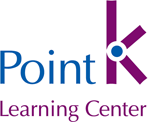Coalition Assessment: Approaches for Measuring Capacity and Impact
Why assess coalition capacity? How should a coalition be assessed? How can coalition assessment data be analyzed and used?
Coalitions are an important tool in the advocacy and policy change toolbox. They can be used to promote an issue, increase visibility, and eventually propel an issue to the forefront of a political or social agenda. They can provide a lot of horsepower—harnessing the combined power and expertise of many entities all at once. And they are a valuable technique for crafting more durable solutions generated by a broad constituency. For all of these reasons, developing and strengthening coalitions is a common strategy among advocates and advocacy funders.
For evaluators, coalition assessment is a growing field of experimentation and learning. Innovation Network has been evaluating coalitions since 2006, beginning with the Coalition for Comprehensive Immigration Reform, a national effort to secure passage by the U.S. Congress for comprehensive immigration reform. Over the years, we have evaluated many different types of
coalitions throughout the United States. Our coalition partners have worked at national, state, regional, and local levels on a variety of advocacy and policy change goals, such as healthy community design or childhood nutrition. This white paper provides practitioners and funders with insights into the coalition assessment process along with concrete examples and lessons we’ve learned from our own work.
| Bibliographic Details | |
|---|---|
| Author | Veena Pankaj, Kat Athanasiades, and Ann Emery |
| Publisher | Innovation Network, Inc. |
| Publication Date | February 4, 2014 |
| Publication City | Washington, DC, USA |
| Publication Work | |
| Resource Type | |
| Resource Focus | |
| Audience | |
| Region | |
| Keywords | |
| Submitted to Point K | February 4, 2014 - 4:03pm |


